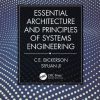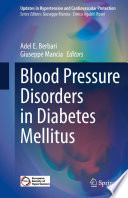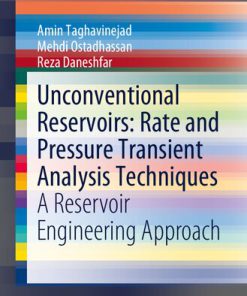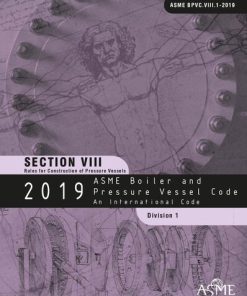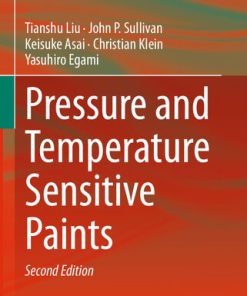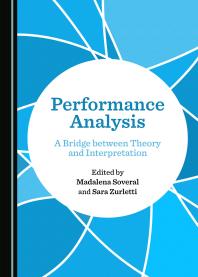Multiprobe Pressure Analysis and Interpretation: Multiprobe Design and Pressure Analysis (Advances in Petroleum Engineering) 1st Edition by Wilson C Chin 9780443241123 0443241120
$50.00 Original price was: $50.00.$25.00Current price is: $25.00.
Multiprobe Pressure Analysis and Interpretation: Multiprobe Design and Pressure Analysis (Advances in Petroleum Engineering) 1st Edition – Ebook Instant Download/Delivery ISBN(s): 9781119760658,1119760658,9780443241123, 0443241120
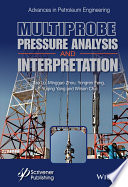
Product details:
- ISBN 10:0443241120
- ISBN 13:9780443241123
- Author:Wilson C Chin
Multiprobe Pressure Testing and Reservoir Characterization
Pressure Transient, Contamination, Liquid and Gas Pumping Analysis
Multiprobe Pressure Testing and Reservoir Characterization: Pressure Transient, Contamination, Liquid and Gas Pumping Analysis provides much-needed three-dimensional pressure transient simulators for job planning and data interpretation in well logging. Discussions cover fundamental concepts, present fluid sampling, pressure transient and contamination analysis; physical concepts and numerical approaches; and multiprobe model formulations and validations. Other sections cover four-probe algorithms, including conventional, overbalanced, and underbalanced drilling applications. The final section addresses triple-probe algorithms, which includes coupled models for pressure and contamination convergence acceleration. Notably, a further chapter explains how the multiprobe tool’s focus on characterizing permeability will promote better use of the reservoir as well as assist with energy storage in underground rock, demonstrating how multiprobe tools also facilitate the energy transition from fossil fuels to sustainable geothermal energy.
- Reviews present day needs, tool operations, and analysis methods, along with numerous practical examples and applications
- Develops a suite of mathematical models, algorithms, and software from first principles
- Explains, in detail, how multiprobe pressure logging is superior to using conventional sensors because direct, accurate reservoir characteristics support energy-efficient geothermal designs
- Provides an alternative look at the investigation of unconventional reservoirs, not only in terms of hydrocarbon production, but also with carbon and energy storage in mind
Table contents:
Part I: Fundamental concepts and generalizations
Chapter 1. Fluid sampling, pressure transient, and contamination analysis
Abstract
1.1 Formation testing background
1.2 Conventional formation testing concepts
1.3 Ideal source model summary
1.4 Modern three-dimensional sampling tools
1.5 Simulator design objectives
1.6 Supercharging, invasion, mudcake effects, and overbalanced and underbalanced drilling
References
Chapter 2. Physical concepts and numerical approaches
Abstract
2.1 Blind spot at the 180-degree probe—profound 3D effects
2.2 Unbalanced doublet flow—an exact analytical solution
2.3 Numerical modeling simply explained—subtleties in cylindrical annular domains
2.4 Implementation details and boundary conditions
References
Chapter 3. Multiprobe model formulations and validations
Abstract
3.1 Basic multiprobe flow modules summarized
3.2 Geometric factor basics
3.3 Geometric factor significance
3.4 Mesh system details
References
Part II: Four-probe algorithms
Chapter 4. Single-phase, four-probe flows—conventional, overbalanced, and underbalanced drilling applications
Abstract
4.1 Modeling strategies reemphasized
4.2 Comprehensive calculated examples
References
Further reading
Chapter 5. Convective-diffusion, four-probe model for pressure and contamination
Abstract
5.1 Pressure and contamination simulations
5.2 Closing remarks
Reference
Further reading
Part III: Triple-probe algorithms
Chapter 6. Single-phase, triple-probe flows—conventional, overbalanced, and underbalanced drilling applications
Abstract
6.1 Historical development notes
6.2 Feature recapitulation
6.3 Drawdown for round and slot nozzles with and without mud filtrate migration through the sandface
6.4 Highly transient applications, drawdown and build-up, multiple round or slot nozzles
6.5 Special topics
6.6 Drawdown for round and slot nozzles with and without mud filtrate migration through the sandface
6.7 Idealized supercharge models
6.8 Highly transient applications, drawdown and build-up, multiple round or slot nozzles, no invasion
6.9 Special topics
6.10 Interpretation approach
6.11 Validating convergence accelerations
6.12 Big data inverse applications
6.13 Dip angle detection
6.14 Closing remarks
References
Chapter 7. Multiphase triple-probe flows—coupled models for pressure and contamination
Abstract
7.1 Pressure and contamination simulations
7.2 Closing remarks
Reference
Further reading
Chapter 8. Convergence acceleration, batch processing, and inverse methods for permeability prediction
Abstract
8.1 Convergence acceleration
8.2 Batch processing
8.3 Inverse methods for permeability prediction
8.4 Closing remarks
References
Further reading
Chapter 9. Gas pumping with multiprobe tools
Abstract
9.1 Background and motivation
9.2 Theory
9.3 Closing remarks
Reference
Further reading
Chapter 10. Axial multiprobe, reservoir characterization, and geothermal issues
Abstract
10.1 Background and motivation
10.2 Review of ideal source axial probe methods
10.3 Example axial “pressure versus time” versus space probe solutions
10.4 Reservoir characterization perspectives, geotechnical and geothermal issues
People also search:
multiprobe pressure analysis and interpretation
multiprobe
multi probe design
multimeter probe tips
multi probe water quality meter
You may also like…
Engineering - Chemical Engineering
Chemical Engineering Design and Analysis: An Introduction 2nd Edition Duncan
Medicine - Diabetes
Blood Pressure Disorders in Diabetes Mellitus 1st Edition Adel E. Berbari
Technique - Regulatory Literature
Technique - Regulatory Literature
Physics - Mechanics: Fluid Mechanics
Uncategorized
Performance Analysis A Bridge Between Theory and Interpretation 1st Edition Madalena Soveral
Engineering - Mechanical Engineering & Dynamics


